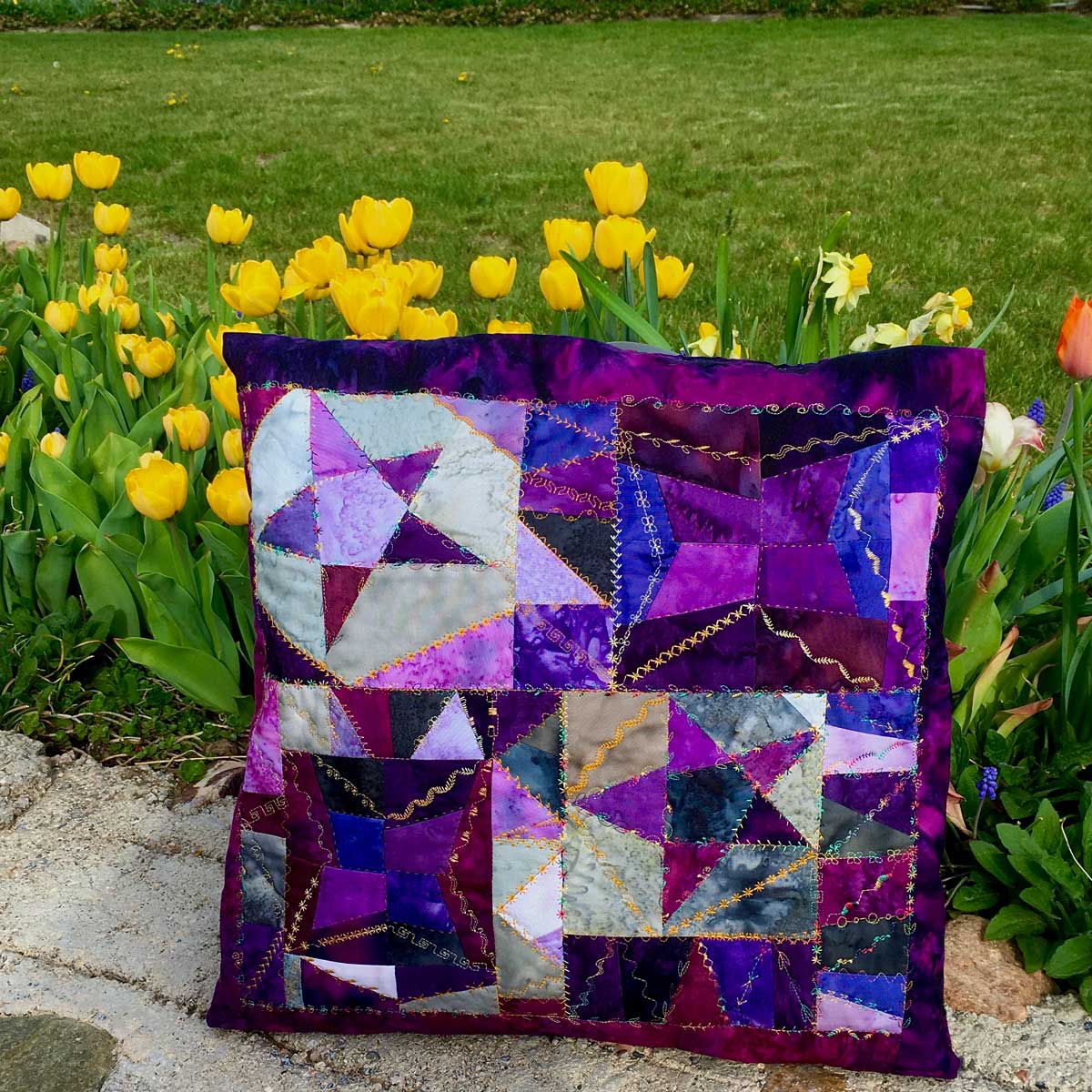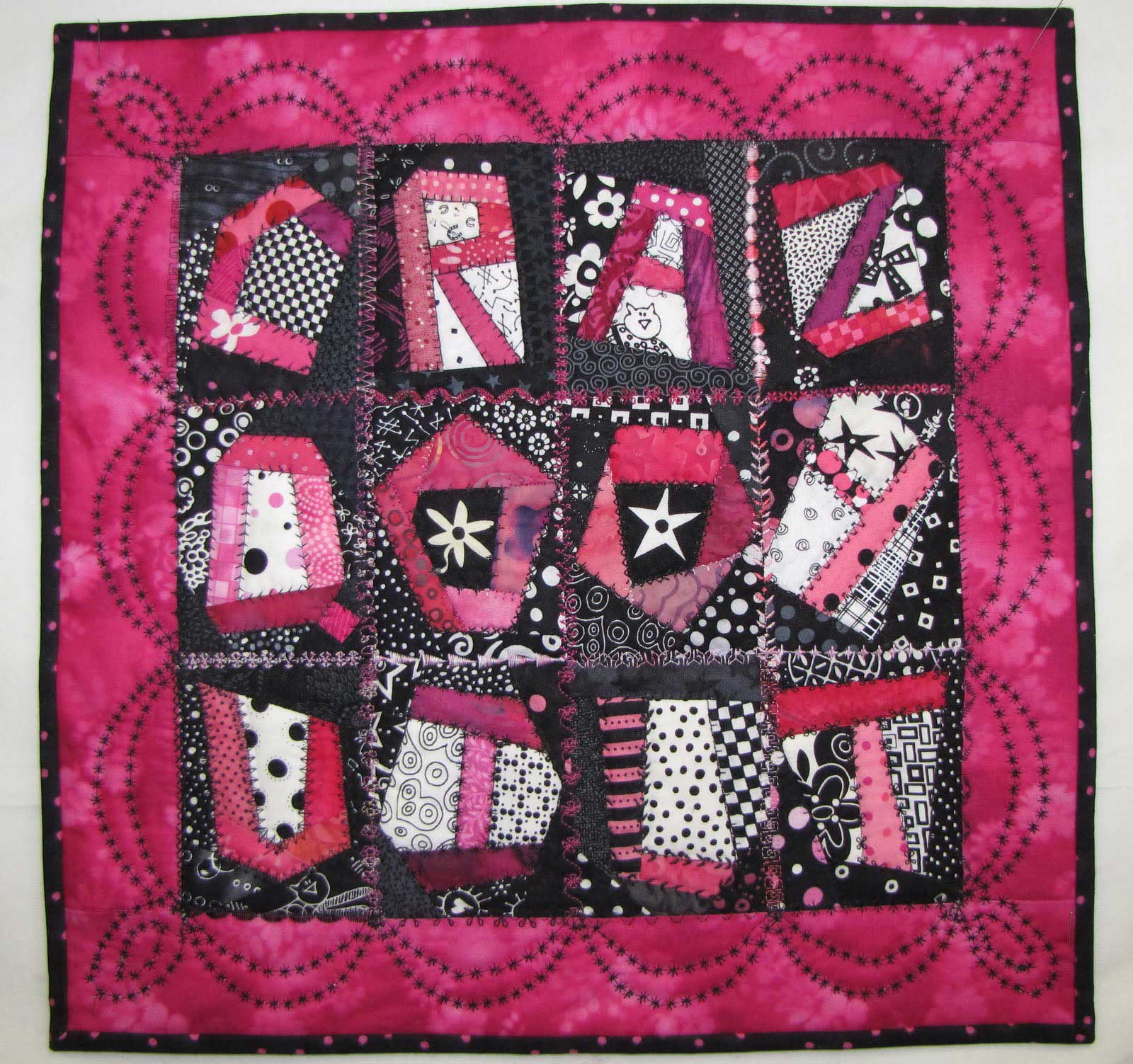Still crazy after all these years! Crazy Quilts – Part II
August 2023
Covering Quilts
Still crazy after all these years! Crazy Quilts – Part II
by Sandra Starley
Crazy Quilts have been an iconic part of quilt history since the 1800s. Similarly, Discover Vintage America has been a sustained force in antiques and history since the early 1970s! Congratulations on 50 Years! My rewarding association with Discover Vintage began in 2015 when they were “looking to start a monthly column on quilting.” I started writing “Covering Quilts” in 2015, so I am already celebrating eight years. While I had previously written only about quilt history, the editors wanted a wider mix of topics, so my writing and research expanded. This endeavor has been a continual learning and growing experience for me, and I hope for my readers as well. Speaking of challenges, my fellow Island Batik fabric ambassadors and I were recently challenged to create a “Crazy Quilt,” which spurred more research on my part. Coincidentally, at the same time, a fellow quilt historian was teaching a study session on what quilts qualify as “Crazy Quilts.” So clearly, this all leads to the question . . .
What is a Crazy Quilt?
Is a Crazy Quilt just the classic velvet, silk, and satin embroidered and embellished quilts from the 1880s as discussed and illustrated in my last column or is there more? The answer is, the category contains much more, and really, the sky is the limit on what can be a crazy quilt. Obviously, the traditional Victorian Era version created with fancy fabric and intricate stitching is the starting point, but most seen is the “contained crazy” block style.
Contained crazies generally have the same random style of piecing as the fancy 1880s versions but are made up of blocks -squares or rectangles. The Victorian versions are often composed of blocks too but contained crazies tend to be framed or contained by sashing.

A Crazy Quilt
A Crazy stars pillow by Sandra Starley, created for the 2023 Island Batik Challenge. Sandra Starley Crazy Quilt, 2023. Image courtesy of the author

A Crazy Quilt
A Crazy Quilt by Sandra Starley, created for the 2009 Quilt Alliance Challenge. (Image courtesy of the author)
Crazy quilting can be the type of piecing regardless of the type of material or em-bellishment (or lack thereof). It can also be a style of quilt or even a pieced block like Rocky Road to Kansas or Kite block. In 2009, the Alliance for American Quilts issued a Crazy Quilt challenge, and the 85 entries are shown on the Quilt Index. The “Crazy Quilts” range from very traditional versions to a James Brown portrait (in honor of I’ll Go Crazy), and everything in between. I participated in the challenge and took it quite literally, spelling out the challenge name: “Crazy Quilt.” Of course, I outlined the letters with fancy stitching.
Fast forward to 2023 and my second Crazy Quilt Challenge (Island Batik). The Ambassador group members each made a quilted crazy quilt project in a variety of shapes and sizes. The majority created table runners with random piecing and decorative stitching including hearts and other pieced designs. One member pieced a unique Christmas tree from crazy pieced blocks. Two were inspired by nature, resulting in a pictorial Van Gogh rabbit scene and crazy pieced stuffed teddy bear. A number of the group used crazy pieces and embroidery to make notebook covers and purses and bags. Freeform star blocks are featured on my crazy pillow with random pieced filler blocks. The finishing touch was embellishment with decorative stitching. Crazy quilting is a fun and forgiving method and I would highly recommend trying it.
Whether you choose traditional or modern, just have fun and go a little crazy!
Collecting Note
There are a lot of crazy quilts ava0ilable in the marketplace in a wide variety of sizes and styles ranging from the fancy silk and satin crazies to simpler wool and cotton versions. You can find them in all price points too.
When purchasing crazy quilts pay attention to condition.
The silk fabrics used in the 1880s and ‘90s were often sold by the pound and weighted with corrosive metal, which caused many to shred or shatter. It is difficult to find quilts that don’t have at least moderate deterioration. You can cover the damaged areas with colored tulle netting for a cleaner look and to lessen future damage.
Sandra Starley is nationally certified quilt appraiser, quilt historian, and avid antique quilt collector. She travels throughout the U.S. presenting talks on antique quilt history, fabric dating classes and trunk shows as well as quilting classes. Learn more at utahquiltappraiser.blogspot.com. Send your comments and quilt questions to SandraStarley@outlook.com
No Results Found
The page you requested could not be found. Try refining your search, or use the navigation above to locate the post.

